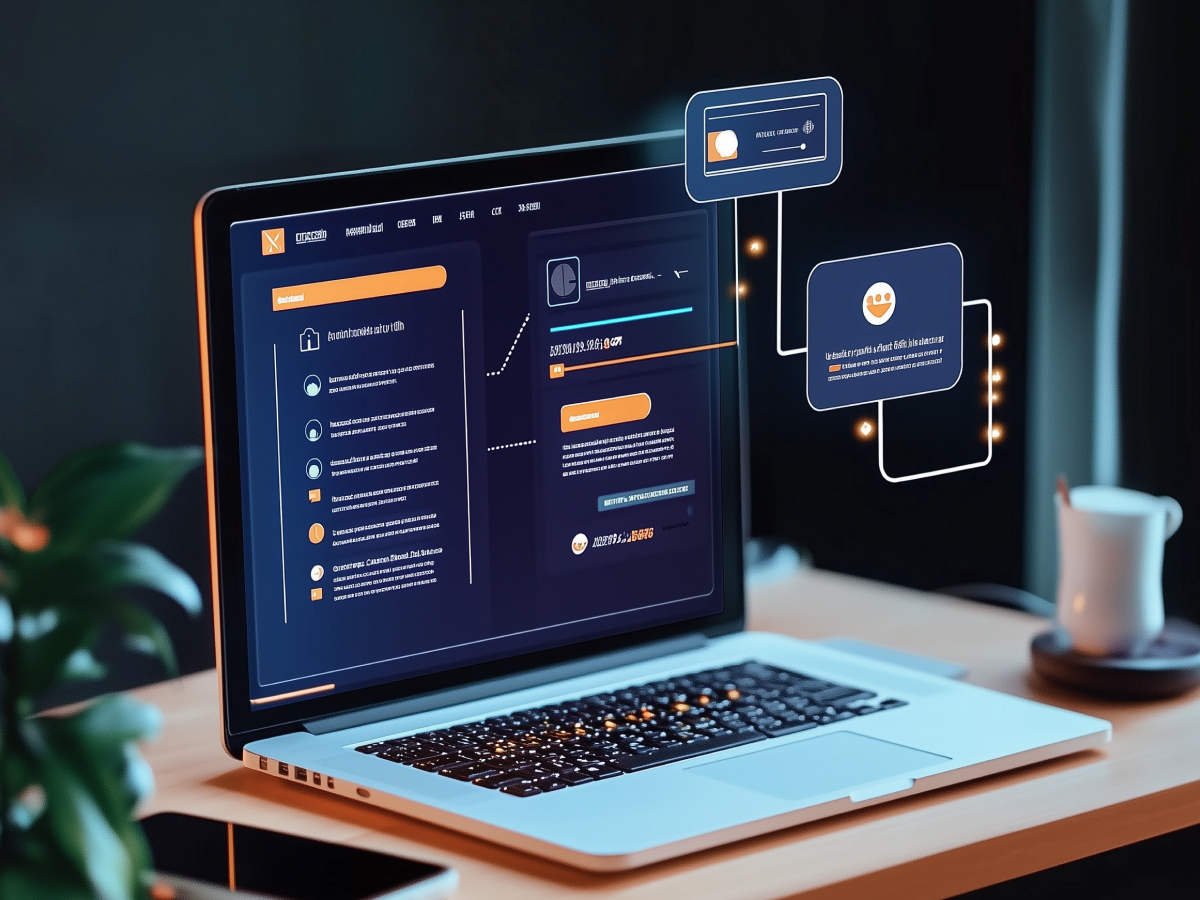Technological and digital advancements continue to reshape industries and drive business transformations. Aligning with strategic technology trends has become a fundamental aspect for organizations aiming to maintain competitiveness and achieve their objectives. Understanding and integrating these trends is essential in a world where technology is not just an enabler but a driver of business innovation.
1. AI trust, risk, and security management (AI TRiSM)
AI Trust, Risk, and Security Management are key for maintaining AI systems’ integrity. These frameworks involve a blend of continuous monitoring, ethical AI principles, and rigorous security protocols. For instance, in the financial sector, AI systems have evolved from basic algorithmic trading to complex fraud detection mechanisms.
With the growing complexity of AI technologies, the need for robust AI TRiSM frameworks has become more pronounced.
A survey by KPMG in 2021 indicated that financial institutions incorporating advanced AI TRiSM protocols saw a 60% reduction in fraudulent transactions, a sizable jump from the earlier years. These advancements highlight a shift from traditional risk management to more sophisticated AI-driven approaches, marking a notable change in industry standards.
2. Continuous Threat Exposure Management (CTEM)
The evolution of cybersecurity threats necessitates a robust Continuous Threat Exposure Management strategy. CTEM’s importance in the current digital era lies in its proactive approach to security, unlike reactive methods of the past. Integrating CTEM into security practices involves not just technology but also a cultural shift toward continuous vigilance.
A study conducted by Symantec in 2023 reported that companies employing CTEM methodologies experienced a marked improvement in detecting and responding to threats, reducing system downtime by an average of 22%. This demonstrates the tangible benefits of adopting a continuous, dynamic approach to cybersecurity, moving beyond traditional, periodic security assessments.
3. Industry cloud platforms for business resilience
Adopting industry-specific cloud solutions offers distinct advantages in terms of scalability, cost-effectiveness, and targeted functionalities. These platforms provide solutions tailored to industry-specific needs, from regulatory compliance to specialized data analytics.
In the healthcare sector, a case study published by HealthTech Magazine in 2023 highlighted how a hospital network leveraged an industry cloud platform to streamline patient data management and improve healthcare delivery.
The network witnessed a 30% improvement in patient care efficiency and a 25% reduction in administrative costs, showcasing the tangible benefits of these platforms in enhancing operational resilience and efficiency in sector-specific applications.
4. Sustainable technology for long-term growth
Sustainable technology is shaping business strategies and operational efficiencies. In the energy sector, the adoption of green technologies has not only contributed to environmental sustainability but also brought about operational cost savings and enhanced brand reputation.
For example, a report by the International Renewable Energy Agency (IRENA) in 2023 showed that companies investing in renewable energy technologies achieved a 20% reduction in energy costs on average, along with a 15% increase in consumer trust ratings due to their sustainable practices. This illustrates how sustainable technology, once considered a corporate social responsibility initiative, has become a core component of business strategy and growth.
5. Democratized generative AI to drive innovation
The democratization of generative AI has opened new avenues for innovation across various sectors. Small and medium-sized enterprises (SMEs), in particular, have benefited from the accessibility of these tools. A survey by the Small Business Association in 2024 indicated that 80% of SMEs using generative AI tools reported enhanced efficiency in product design and marketing strategies.
An example is a boutique fashion brand that used generative AI to create unique clothing patterns, resulting in a 45% increase in online sales. These trends demonstrate how generative AI is not just a technology for large corporations but a transformative tool for businesses of all sizes.
6. Platform engineering and shifts in software development
Platform engineering represents a paradigm shift in how software solutions are developed and delivered. It emphasizes a collaborative and efficient approach to software development, breaking down traditional silos between development and operations teams.
A case study published in the Harvard Business Review in 2023 highlighted how a multinational corporation adopted platform engineering, resulting in a 40% reduction in time-to-market for new software products.
The study attributed this efficiency to the modular and reusable components of platform engineering, which enabled faster and more flexible development processes. This approach has increasingly become the norm in software development, reshaping traditional methodologies and setting new industry benchmarks.
7. AI-augmented development: Transforming software creation
AI-augmented development has redefined the software development process by integrating AI into various stages, from design to testing.
This integration has led to improved efficiency, reduced errors, and enhanced code quality. A notable instance is a tech startup that utilized AI algorithms to optimize its codebase, resulting in a 30% reduction in development time and a 20% decrease in bug density. Such improvements have a direct impact on the cost and quality of software products, making AI-augmented development a key strategy for companies looking to stay competitive in the rapidly changing tech industry.
8. Intelligent applications: Streamlining business processes
Intelligent applications are redefining how businesses operate, offering smarter and more efficient ways to handle tasks. These applications, powered by AI and machine learning algorithms, automate routine processes and provide insights for better decision-making.
A logistics firm’s adoption of intelligent routing software, as reported in a 2024 logistics industry analysis, led to a 25% improvement in route efficiency and a 20% reduction in fuel costs. These applications exemplify the practical benefits of AI in optimizing business operations, demonstrating the substantial impact of intelligent technology in streamlining processes and enhancing operational efficiencies.
9. Machine customers: Tapping into a new market
Engaging machine customers opens up a novel market segment for businesses. Developing AI-driven interfaces and automated services is a strategic approach to cater to this emerging demographic. For instance, an e-commerce platform introduced an AI-powered shopping assistant, leading to a 15% increase in sales.
This growth reflects the burgeoning potential of machine customers. Another example is a smart vending machine company that leveraged machine customers, seeing a 25% rise in sales due to personalized product recommendations based on consumer behavior analytics.
10. Augmented connected workforce: Shaping the future workplace
Augmenting workforce capabilities through technology boosts productivity. Continuous training and the integration of collaborative technologies are among the best practices in this area. A notable example is a global tech company that reported a 25% increase in productivity after implementing augmented reality tools for remote collaboration.
Such technologies not only enhance efficiency but also foster a more connected and engaged workforce. Another case is a design firm that utilized virtual reality for collaborative design sessions, cutting down project timelines by 30% and improving team cohesion.
11. Sustainable technology: Broadening business impact
The integration of sustainable technology into business operations has profound effects on strategy and innovation. A manufacturing company’s 30% reduction in its carbon footprint through sustainable tech is a prime example of this impact.
Sustainable technologies not only contribute to environmental conservation but also drive economic benefits. A retail company, for instance, implemented a solar-powered supply chain, which led to a 20% reduction in energy costs and a tangible enhancement in brand reputation due to its commitment to sustainability.
12. Hyper-automation: The next leap in business efficiency
Hyperautomation represents a major transformation in how businesses operate.
The integration of AI, machine learning, and robotic process automation (RPA) streamlines and optimizes workflows.
A retail chain’s 40% improvement in supply chain efficiency after adopting hyper-automation is a testament to its transformative power. Another example is a financial services firm that implemented hyper-automation, resulting in a 50% reduction in process time for loan approvals and a notable improvement in customer satisfaction due to faster service.
13. Edge computing: Improving connectivity and real-time processing
Edge computing plays a substantial part in managing the data influx from IoT devices. Its ability to reduce latency and improve data management is a core focus in modern technology environments. For instance, a transport company can leverage edge computing for its fleet management to experience up to a 20% reduction in operational costs.
Edge computing’s role in improving real-time data processing has seen widespread adoption in sectors like healthcare, where hospitals implemented edge computing for real-time patient monitoring, leading to improved patient care and a 15% decrease in emergency response times.





